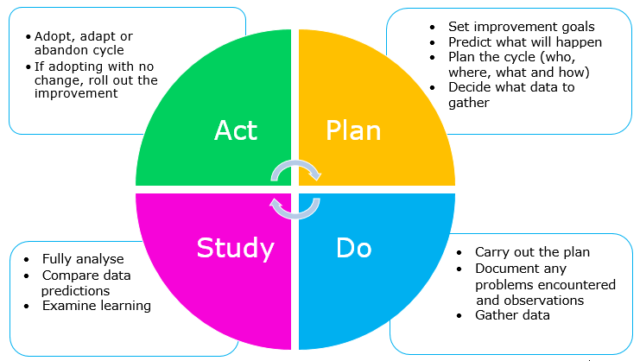The Plan-Do-Study-Act (PDSA) Cycle or Deming Cycle is an integrated improvement model was first introduced to Dr. Deis a quality improvement model that was introduced to introduced to Dr. Deming by his mentor, Walter Shewhart. The PDSA involves four phases of implementing change and assessing its impact. The first phase is plan, which involves the identification of a specific problem or opportunity for improvement and development of a plan to address it. In this phase, individuals involved in quality imporvement set clear objectives, define metrics for succes, and the steps that need to be followed to achieve the goals. It is also in this phase that quality imporvement officers gather relevant data and resources necessary for implementation.
The second phase of the PDSA is Do. This is where the proposed change plan is executed. In most cases, this phase involves the implementation of new processes, procedures, or interventions to bring about the desired change. The quality imporvement officers here are keen to document the actions taken and any unexpected issues that arise. The third phase is study, where quality improvement officers study the results to assess their effectiveness. This step also involves analaysis of data to estalish whether the changes had the desired impact. The actual outcomes are compared against the objectives to identify any discrepancies.

The fourth phase of the Plan-Do-Study-Act (PDSA) Cycle is act. This is where the quality imporvement officers decide whether to adopt or abandon the changes. In the event that the changes met expectations, you can standardize the new process or continue refining it further. If the results fall short, the quality imporvement team might adjust the approach, gather more data, or try alternative solutions. The PDSA cycle is iterative so that the completion of one cycle opens up the other cycle.
